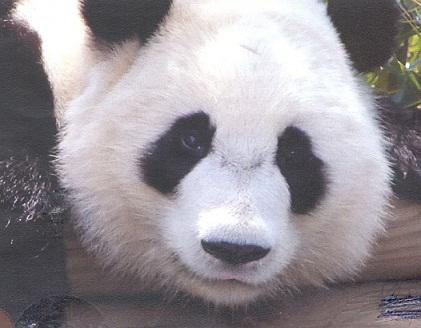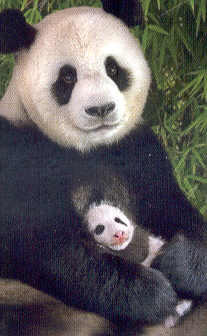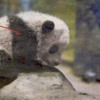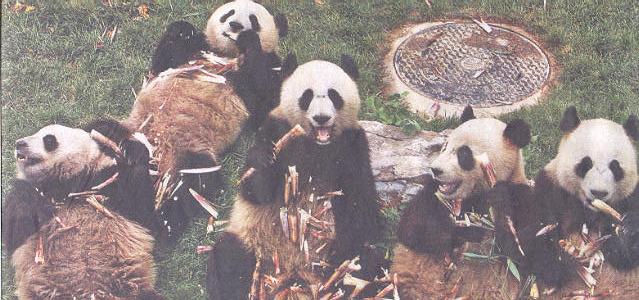Some information on Giant Panda
from the Toronto Zoo newsletter.
Although they once roamed over a large portion of Asia, scientists currently estimate the population of of the Giant panda at only 1,600, making them a seriously endangered species.
In the Han dynasty (206BC-24AD), the highly prized and gentle pandas graced the gardens of the emperors. Pandas were believed to have mystical powers.
The Giant panda is considered a "National Treasure" by the people of China.
The Giant panda is believed to have existed since the Pleistocene age, approximately 3 million years ago.
Their diet consists of almost entirely of bamboo stalks, shoots and roots. They eat from 25 to 40 pounds a day.
When available, they will eat fish, flowers and small animals.
Unlike other bears, the Giant pandas do not store fat and therefore do not hibernate; therefore they are constantly in search for food.
The problem is that the bamboo species flowers and dies. It then takes several years for the bamboo to recover.
They drink water from the rivers and streams in the mountain environment.
Latest research confirms adult Giant pandas are much more "talkative" than we suspected and have the ability to make 11 distinct sounds.
Giant pandas nest on the ground or in hollow trees. Hollow trees are becoming scarcer, creating a problem for breeding.
Females give birth to one or two cubs. The mother will select the stronger of the cubs and the weaker will die.
The Giant panda's primary food source, bamboo, is decreasing. Bamboo grows under the shade of the large fir trees. Logging and clearing the land for agricultural uses is a major factor in the reduction of bamboo. The destruction of Giant panda's habitat, the reduction in available bamboo forests and expanding human population are the main threat to the Giant Panda.
A study in 2004 by the Chinese Department of Forestry estimated the current population of the wild Giant pandas at approximately 1,600. There are also about 300 Giant pandas in captivity.
This magnificent animal, a survivor of the ice age and centuries beyond, is now in grave danger of extinction.
The survival of each living panda becomes crucial to the survival of the species, each animal, those in captivity and in the wild, must be attended to and monitored. The pandas, like other creatures on earth, are valuable and precious. If we are not diligent we will move one step close to a world without these unique creatures, one step closer to the destruction of yet another species and its ecosystem.
















 Er Shun had twin panda cubs.
Er Shun had twin panda cubs.





